Brief
Holistic STEM Learning
A Summary of Selected Reports from the National Academies of Sciences, Engineering, and Medicine
Connected Science Learning May-July 2017 (Volume 1, Issue 3)
By Jay B. Labov
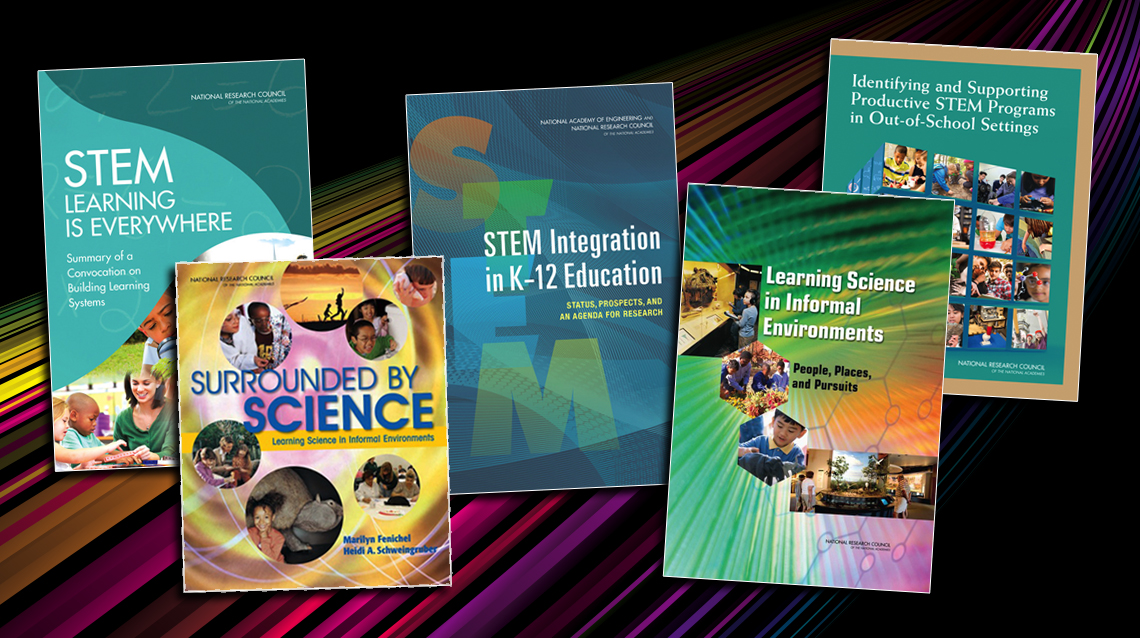
Free reports from the National Research Council and the National Academies of Sciences, Engineering, and Medicine can help practitioners bridge in-school and out-of-school STEM learning.
On average, students in grades K–12 in the United States spend fewer than 20% of their awake hours in formal education settings (Figure 1). Thus, most learning occurs in environments outside of school, such as the home, museums, clubs, and parks. Increasingly, after-school programs have restructured themselves to provide extended learning opportunities to children in STEM (science, technology, engineering, and math) subjects.
Figure 1
Lifelong and Lifewide Learning
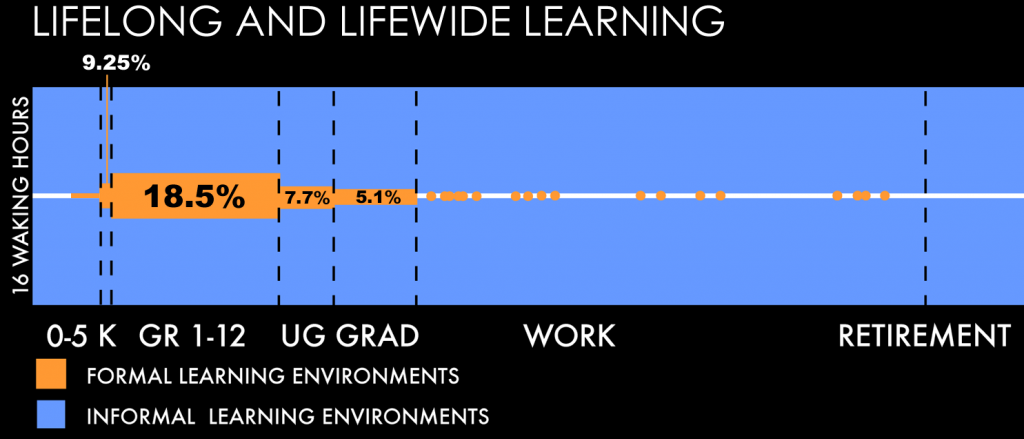
Credit: The LIFE Center, University of Washington
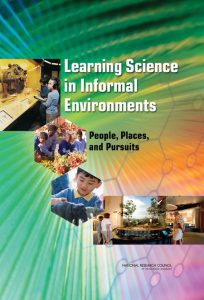
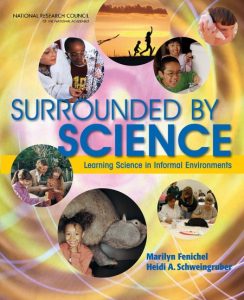 However, attempts to connect and integrate opportunities for learning among these education sectors, especially in the STEM disciplines, have for too long been largely ad hoc, localized, and idiosyncratic. In 2009 and 2010, the National Research Council (NRC) of the National Academies of Sciences, Engineering, and Medicine (NASEM) published two reports about science learning in informal (out-of-school) environments: one technical (Learning Science in Informal Environments, NRC 2009), and the other designed for practitioners (Surrounded by Science, NRC 2010) in the informal science education community. Both of these reports, as well as others by NASEM, are freely available online.
However, attempts to connect and integrate opportunities for learning among these education sectors, especially in the STEM disciplines, have for too long been largely ad hoc, localized, and idiosyncratic. In 2009 and 2010, the National Research Council (NRC) of the National Academies of Sciences, Engineering, and Medicine (NASEM) published two reports about science learning in informal (out-of-school) environments: one technical (Learning Science in Informal Environments, NRC 2009), and the other designed for practitioners (Surrounded by Science, NRC 2010) in the informal science education community. Both of these reports, as well as others by NASEM, are freely available online.
The technical report examines research literature from disparate fields within informal science, synthesizes what was known to date about the diverse ways in which the informal science education community is contributing to improving STEM education, and offers ideas for a common framework for future research on ways to improve science learning in informal environments across a learner’s life span. The practitioner report, written for those who are directly involved in providing informal science experiences, emphasizes practical components of the technical report, such as what is known about effective science learning, effective ways of assessing learning, and insights about how learning experiences differ with age.
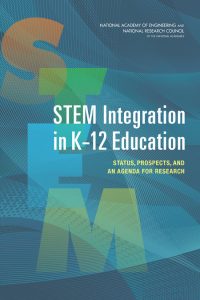 With increasing attention being paid to the integration of STEM subject areas, helping students learn about STEM seamlessly across the formal and informal sectors has become more challenging in some respects, as noted in STEM Integration in K–12 Education (NRC 2014b). For example, many teachers at all grade levels have had little professional development in teaching about, let alone integrating, engineering and technology with science or mathematics (and integrating the latter two disciplines has long presented a similar challenge). However, the infrastructural challenges for holistically improving STEM teaching and learning for all students are real and difficult. Each of these communities has different expectations for programs and curricula, levels of education, funding, types of professional development, and a host of related issues.
With increasing attention being paid to the integration of STEM subject areas, helping students learn about STEM seamlessly across the formal and informal sectors has become more challenging in some respects, as noted in STEM Integration in K–12 Education (NRC 2014b). For example, many teachers at all grade levels have had little professional development in teaching about, let alone integrating, engineering and technology with science or mathematics (and integrating the latter two disciplines has long presented a similar challenge). However, the infrastructural challenges for holistically improving STEM teaching and learning for all students are real and difficult. Each of these communities has different expectations for programs and curricula, levels of education, funding, types of professional development, and a host of related issues.
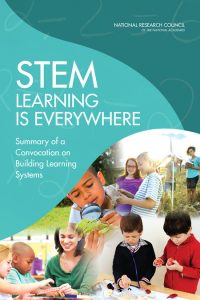 To begin conversations about this complex set of issues, in 2014 the NRC organized a convocation under the aegis of its Teacher Advisory Council (TAC) and the California Teacher Advisory Council that brought together leading representatives from the formal, informal, and after-school education communities to explore ways that they can work together to better reach and serve the educational needs of students in grades K–12. The conversations and ideas that participants expressed for more seamlessly connecting the three sectors are summarized in STEM Learning Is Everywhere: Summary of a Convocation on Building Learning Systems (NRC 2015a).
To begin conversations about this complex set of issues, in 2014 the NRC organized a convocation under the aegis of its Teacher Advisory Council (TAC) and the California Teacher Advisory Council that brought together leading representatives from the formal, informal, and after-school education communities to explore ways that they can work together to better reach and serve the educational needs of students in grades K–12. The conversations and ideas that participants expressed for more seamlessly connecting the three sectors are summarized in STEM Learning Is Everywhere: Summary of a Convocation on Building Learning Systems (NRC 2015a).
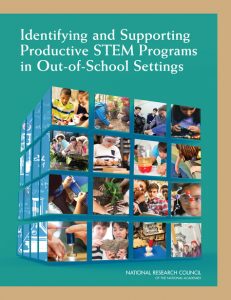 This convocation was followed by a more comprehensive study by the NRC on out-of-school learning (Identifying and Supporting Productive STEM Programs in Out-of-School Settings, NRC 2015b), which offered recommendations from a committee of experts to policy makers at the local, state, and national levels; funders; and education leaders in both in- and out-of-school settings about how best to coordinate educational and learning resources in their communities. These reports have helped catalyze a national effort to implement programs across these sectors through the STEM Learning Ecosystems initiative supported by the STEM Funders Network.
This convocation was followed by a more comprehensive study by the NRC on out-of-school learning (Identifying and Supporting Productive STEM Programs in Out-of-School Settings, NRC 2015b), which offered recommendations from a committee of experts to policy makers at the local, state, and national levels; funders; and education leaders in both in- and out-of-school settings about how best to coordinate educational and learning resources in their communities. These reports have helped catalyze a national effort to implement programs across these sectors through the STEM Learning Ecosystems initiative supported by the STEM Funders Network.
An important sector that is often overlooked (if not ignored) in the improvement of STEM education is the teaching community. To explore the roles that classroom teachers can play in helping shape education policy and decision making, the TAC organized two additional convocations around these issues: Exploring Opportunities for STEM Teacher Leadership: Summary of a Convocation (NRC 2014a) and Increasing the Roles and Significance of Teachers in Policymaking for K–12 Engineering Education: Proceedings of a Convocation (NASEM 2017).
Given the recognized importance of connections across sectors and attempts to make these links through multiple channels, further discussion about how STEM practitioners can more broadly work together to have an impact on education policy seems both warranted and timely.
Jay B. Labov (JLabov@nas.edu) is senior advisor for education and communication at the National Academies of Sciences, Engineering, and Medicine in Washington, DC.


